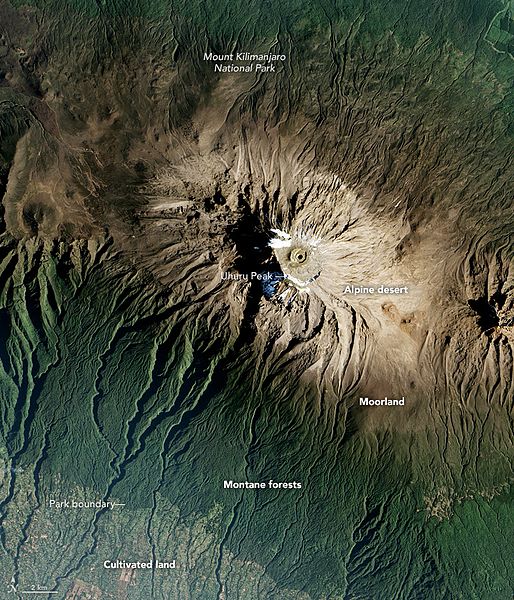Файл:Kilimanjaro from space 2016.jpg
Перейти к навигации
Перейти к поиску

Размер этого предпросмотра: 514 × 600 пкс. Другие разрешения: 206 × 240 пкс | 411 × 480 пкс | 720 × 840 пкс.
Исходный файл (720 × 840 пкс, размер файла: 371 КБ, MIME-тип: image/jpeg)
История файла
Нажмите на дату/время, чтобы посмотреть файл, который был загружен в тот момент.
| Дата/время | Миниатюра | Размеры | Участник | Примечание | |
|---|---|---|---|---|---|
| текущий | 03:18, 8 февраля 2017 |  | 720 × 840 (371 КБ) | Tillman | {{Information |Description ={{en|1=Stories about Mount Kilimanjaro often focus on its height and location. The mountain—the tallest in Africa—is capped with snow and ice, despite sitting at a tropical latitude close to the equator. This volcanic... |
Использование файла
Нет страниц, использующих этот файл.
Глобальное использование файла
Данный файл используется в следующих вики:
- Использование в av.wikipedia.org
- Использование в ban.wikipedia.org
- Использование в bcl.wikipedia.org
- Использование в ca.wikipedia.org
- Использование в en.wikipedia.org
- Использование в id.wikipedia.org
- Использование в ja.wikipedia.org
- Использование в min.wikipedia.org
- Использование в sd.wikipedia.org
- Использование в sh.wikipedia.org
- Использование в sl.wikipedia.org
- Использование в sr.wikipedia.org
- Использование в uk.wikipedia.org


